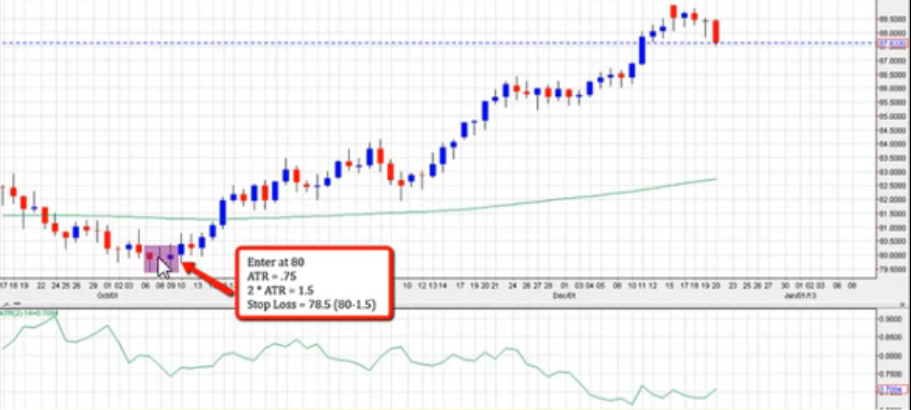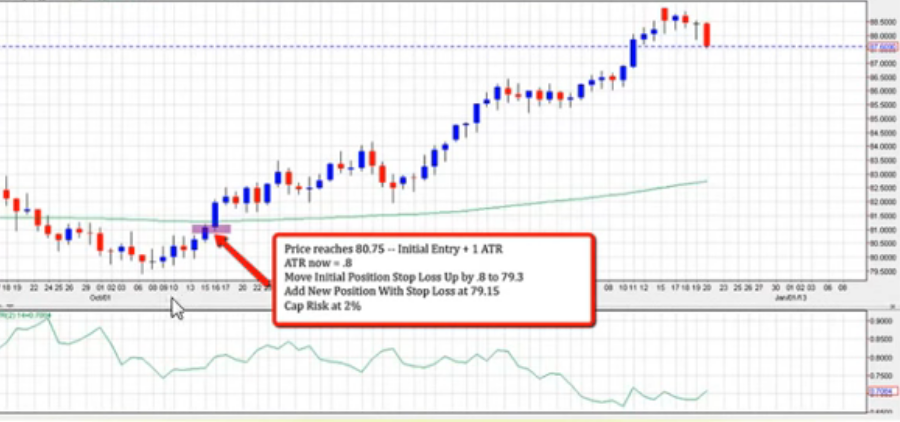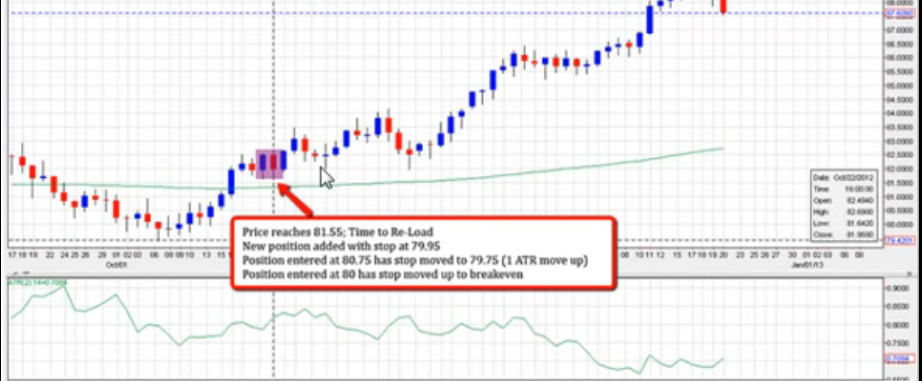-Use 14 Period ATR
-Set initial stop loss at 2 X ATR
-As prices move 1 ATR in your favor, move all positions up by 1 ATR and add another at -2 X ATR
Fig.1

Fig.2

Fig.3

Fig. 1(step 1) shows that 80.00 Enter price, ATR=0.75. In order to get a
Fig.2 (step 2) shows that it is time to re-load. Once 1ATR (0.75) up, which is 80.75. This was
Fig. 3 (step 3) Shows a new price again. Once reach at 81.55 (80.75 + 0.8), re-load a new position. ATR = 0.8. Stop loss is at 79.95 (79.15 + 0.8)
Example

The first stop is placed at $44.31, as it can only move lower. Each day the ATR is multiplied by 2 and added to the closing price. If it provides a lower figure than the last, then the stop is moved to this lower level.
At the start of May there is sharp sell-off and the price closes at a $30.66 with an ATR of 2.835. This moves the stop to $36.33 [(2 × 2.835) + 30.66].
The price continues to drop through May, but so does the ATR. On May 27 the price closes at $30.51 and ATR is 1.37. The new stop is $33.25 [(2 × 1.37) + 30.51]. This stop is hit shortly after, closing out the position.
The same process applies to uptrends. After entry, multiply the ATR by 2 and subtract it from the closing price. Do this each day and adjust the stop accordingly. The stop can only move higher and never move lower, as that would increase your risk.